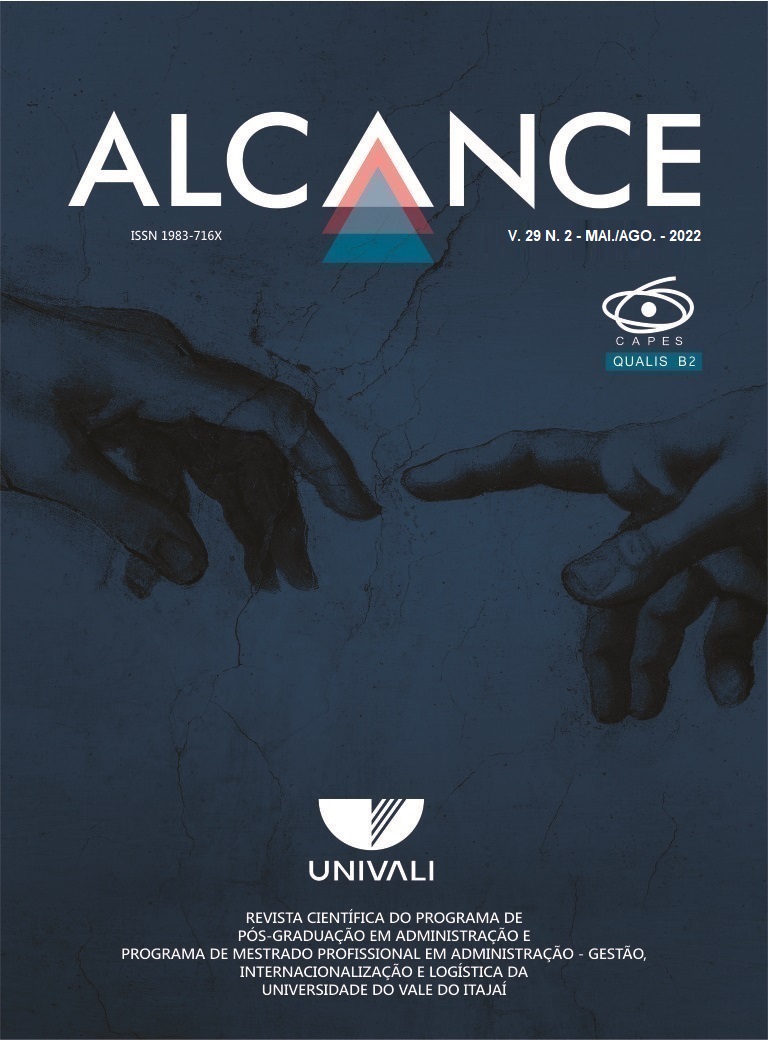





Amabile, T. M. (1983). The social psychology of creativity: A componential conceptualization. Journal of personality and social psychology, 45(2), 357.
Amabile, T. M., Barsade, S. G., Mueller, J. S., & Staw, B. M. (2005). Affect and creativity at work. Administrative science quarterly, 50(3), 367-403.
Amabile, T. M., & Pratt, M. G. (2016). The dynamic componential model of creativity and innovation in organizations: Making progress, making meaning. Research in organizational behavior, 36, 157-18
Associação Brasileira das Indústrias de Calçados (ABICALÇADOS). (2020). Relatório Setorial Indústria de Calçados. Disponível em: http://abicalcados.com.br/publicacoes/relatorio-setorial/. Acesso em: 6 nov. 2020.
Associação Brasileira da Indústria Têxtil e de Confecção (ABIT). 2020. Disponível em: https://www.abit.org.br/cont/casa-abit.
Bauer, M. W., & Gaskell, G. (2017). Pesquisa qualitativa com texto, imagem e som: um manual prático. Editora Vozes Limitada.
Baxter, M. (2011). Projeto de produto: guia prático para o design de novos produtos. Editora Bluche.
Bendassolli, P. F., Wood Jr, T., Kirschbaum, C., & Cunha, M. P. (2009). Indústrias criativas: definição, limites e possibilidades. Revista de Administração de Empresas, 49, 10-18.
Berlim, L. (2020). Moda e sustentabilidade: uma reflexão necessária. Estação das Letras e Cores Editora.
Bruno-Faria, M. F, (2007). O caráter complexo do processo criativo em projetos inovadores. Revista de Administração Faces, Belo Horizonte, 6(2), 105-117.
Caniëls, M. C., & Rietzschel, E. F. (2015). Organizing creativity: Creativity and innovation under constraints. Creativity and Innovation Management, 24(2), 184-196.
Conferência Das Nações Unidas Sobre Comércio e Desenvolvimento (UNCTAD). (2018). Creative Economy outlook: trends in international trade in Creative Industries (2002-2015). Country profiles (2005-2014). United Nations.
Conti, G. M. (2008). Moda e Cultura de projeto industrial: hidridação entre saberes complexos. In D. B. Pires et al. (Orgs.). Design de Moda: olhares diversos. Barueri, SP: Estação das Letras e Cores.
Csikszentmihalyi, Mihaly. (1996). Creativity: Flow and the Psychology of Discovery and Invention. HarperCollins. Nova Iorque, EUA.
Dong, Y., Bartol, K. M., Zhang, Z. X., & Li, C. (2017). Enhancing employee creativity via individual skill development and team knowledge sharing: Influences of dual‐focused transformational leadership. Journal of Organizational Behavior, 38(3), 439-458.
Fabun, D. (1969). You and creativity. Allyn & Bacon, 25(3).
Federação das Indústrias do Estado do Rio De Janeiro (FIRJAN). (2019). Mapeamento da Indústria Criativa no Brasil. Rio de Janeiro.
Gil, A. C. (2002). Como elaborar projetos de pesquisa. São Paulo: Atlas.
Godart, F. C. (2018). Why is style not in fashion? Using the concept of “style” to understand the creative industries. In Frontiers of creative industries: Exploring structural and categorical dynamics. Emerald Publishing Limited.
Hartley, J. (2005). Creative industries. Blackwell Publishing Ltd.
Klein, K. J., Tosi, H., & Cannella Jr, A. A. (1999). Multilevel theory building: Benefits, barriers, and new developments. Academy of Management review, 24(2), 248-253.
Lipovetsky, G. (2009). O império do efêmero: a moda e seu destino nas sociedades modernas. Editora Companhia das Letras.
Loconte, L. (2020). Além dos saberes e fazeres: o impacto social e econômico da indústria criativa. Ciência e Cultura, 72(1), 58-59.
Löbach, B. (2001). Design industrial: bases para configuração dos produtos industriais. São Paulo, SP: Edgard Blücher.
Manenti, D. Z. (2013). Antecedentes e consequências da criatividade organizacional. Tese (Doutorado em Gestão de Empresas, especialidade em Marketing) – Faculdade de Economia da Universidade de Coimbra, Coimbra, Portugal.
Millspaugh, J. & Kent, A. (2016). Co-creation and the development of SME designer fashion enterprises. Journal of Fashion Marketing and Management: An International Journal, 20(3), 322-338.
Moraes, R. (2003). Uma tempestade de luz: a compreensão possibilitada pela análise textual discursiva. Ciência & Educação, Bauru, SP, 9(2), 191-211, 2003.
Morin, E. (2000). A cabeça bem-feita. Rio de Janeiro: Bertrand Brasil.
Morin, E., & Lisboa, E. (2007). Introdução ao pensamento complexo. Porto Alegre: Sulina.
Moura, M. (2008). A moda entre a arte e o design. In: D. B. Pires et al. (Orgs.). Design de Moda: olhares diversos. Barueri, SP: Estação das Letras e Cores.
Mozota, B. B., Klöpsch, C., & Costa, F. C. X. (2011). Gestão do design: usando o design para construir valor de marca e inovação corporativa. Porto Alegre: Bookman.
Núñez, T. (2016). A economia criativa do RS: estimativas e potencialidades. Indicadores Econômicos FEE, 44(2), 93-108.
Paulus, P. B., & Baruah, J. (2018). Enhancing creativity in E-Planning: recommendations from a collaborative creativity perspective. In: New approaches, methods, and tools in urban E-Planning (192-222). IGI Global.
Perry-Smith, J. E, & Mannucci, P. V. (2017). From creativity to innovation: The social network drivers of the four phases of the idea journey. Academy of Management Review, 42(1), 53-79.
Pires, D. B. (Org.). (2008). Design de Moda: olhares diversos. Barueri, SP: Estação das Letras e Cores.
Rech, S.R. (2008). Estrutura da cadeia produtiva da moda. Moda Palavra e-periódico, 7-20.
Stacey, R. D., & Griffin, D. (2005). Introduction: Leading in a complex world. In D. Griffin, & R. Stacey (Orgs.), Complexity and the Experience of Leading Organizations, Routledge, Taylor & Francis Group (pp. 1-16). London, ING: Routledge,.
Sternberg, R. J., & Lubart, T. I. (1991). An investment theory of creativity and its development. Human development, 34(1), 1-31.
Sternberg, R. J. (2006). The nature of creativity. Creativity Research Journal, [s. l.], 18(1), 87-98.
Treptow, D. (2013). Inventando moda: planejamento de coleção. D.
Woodman, R. W., Sawyer, J. E., & Griffin, R. W. (1993). Toward a theory of organizational creativity. Academy of management review, 18(2), 293-321.




Copyright (c) 2022 Revista Alcance

Este trabalho está licenciado sob uma licença Creative Commons Attribution 4.0 International License.






A Revista Alcance é uma revista brasileira de livre acesso, com publicação quadrimestral, vinculada ao Programa de Pós-Graduação em Administração e Programa de Mestrado Profissional em Administração - Gestão, Internacionalização e Logística da Universidade do Vale do Itajaí – Univali. Procuramos publicar artigos de trabalhos teóricos-empíricos e tecnológicos nas áreas da Administração. Diferentes perspectivas teóricas e metodológicas são bem-vindas, desde que sejam consistentes e relevantes para o desenvolvimento da área.

